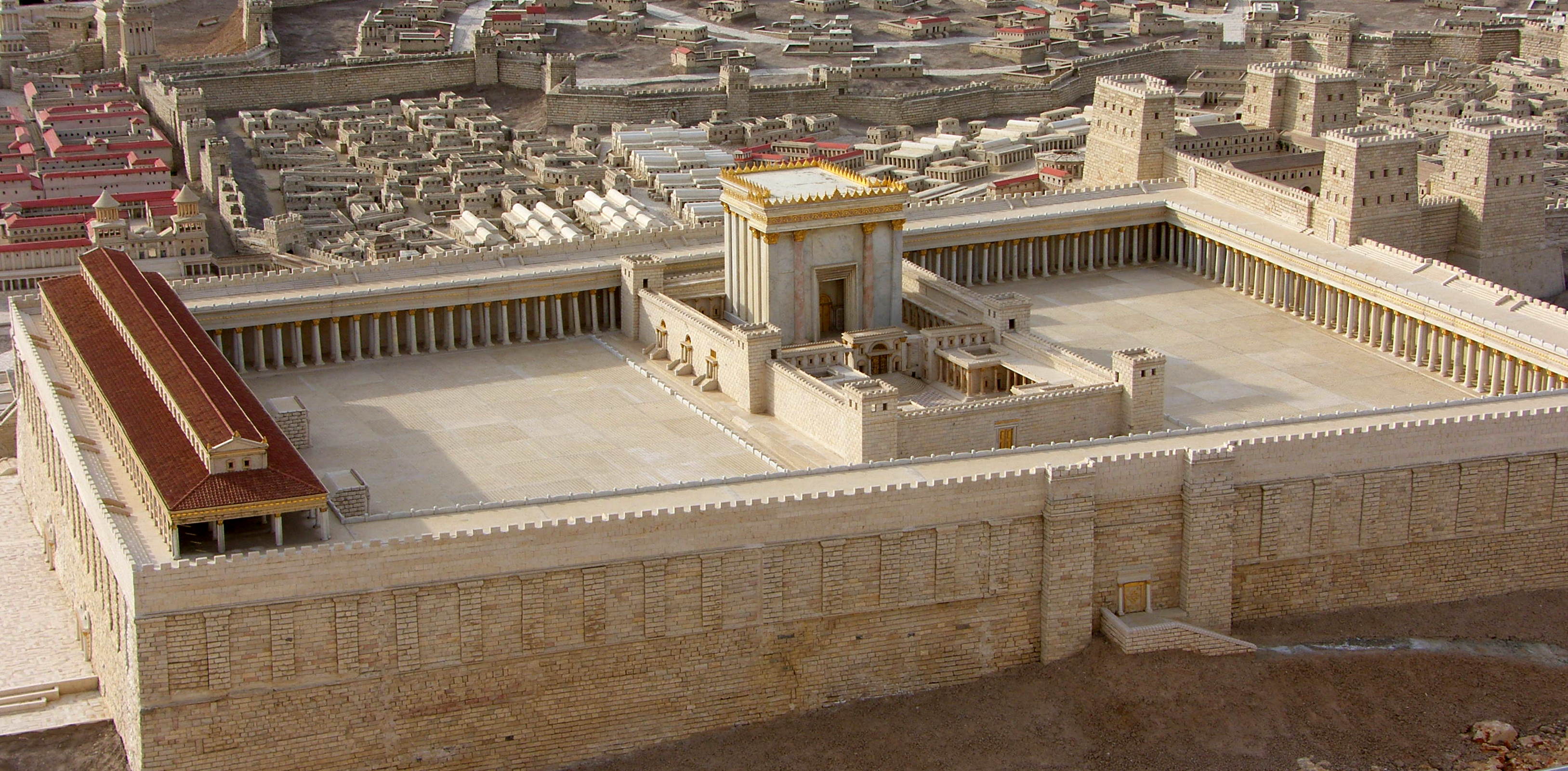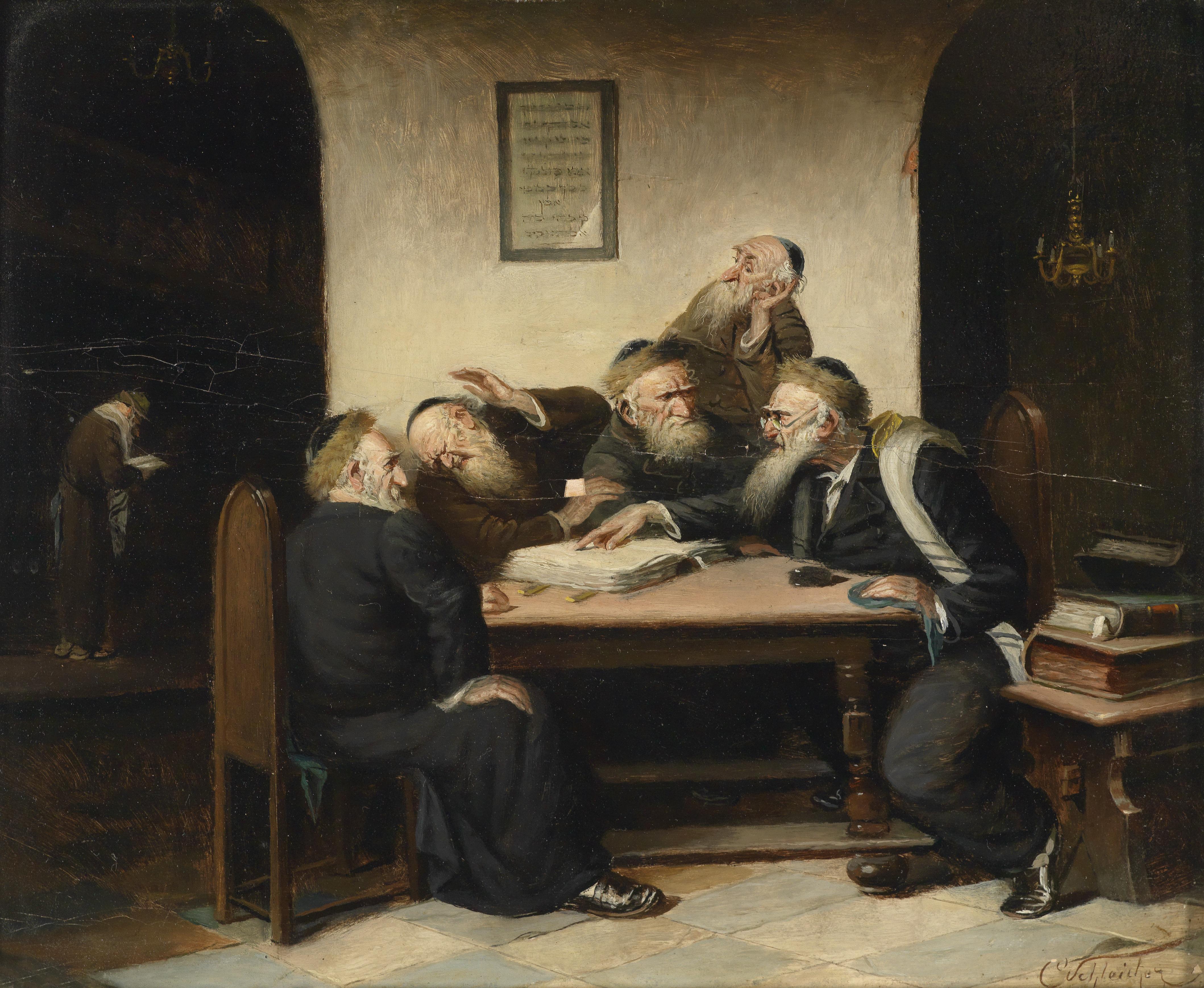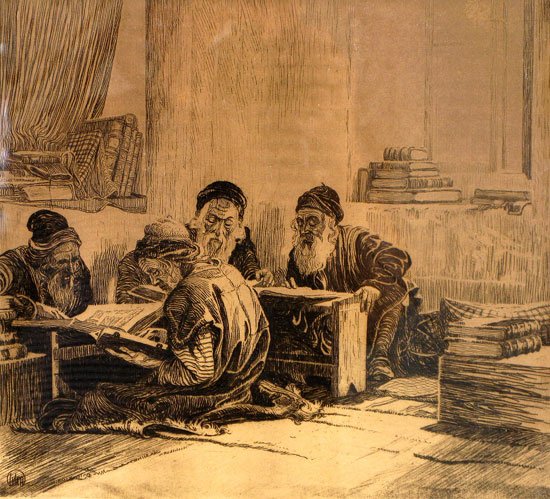|
Destruction Of The Second Temple
The siege of Jerusalem in 70 CE was the decisive event of the First Jewish–Roman War (66–73 CE), a major rebellion against Roman rule in the province of Judaea. Led by Titus, Roman forces besieged the Jewish capital, which had become the main stronghold of the revolt. After months of fighting, they breached its defenses, destroyed the Second Temple, razed most of the city, and killed, enslaved, or displaced a large portion of its population. The fall of Jerusalem marked the effective end of the Jewish revolt and had far-reaching political, religious, and cultural consequences. In the winter of 69/70 CE, following a pause caused by the Roman succession war, the campaign in Judaea resumed as Titus led at least 48,000 troops—including four legions and auxiliary forces—back into the province. By spring, this army had encircled Jerusalem, whose population had surged with refugees and Passover pilgrims. Inside the city, rival factions led by John of Gischala, Simon b ... [...More Info...] [...Related Items...] OR: [Wikipedia] [Google] [Baidu] |
First Jewish–Roman War
The First Jewish–Roman War (66–74 CE), also known as the Great Jewish Revolt, the First Jewish Revolt, the War of Destruction, or the Jewish War, was the first of three major Jewish rebellions against the Roman Empire. Fought in the province of Judaea, it resulted in the destruction of Jerusalem and the Jewish Temple, mass displacement, land appropriation, and the dissolution of the Jewish polity. Judaea, once independent under the Hasmoneans, fell to Rome in the first century BCE. Initially a client kingdom, it later became a directly ruled province, marked by the rule of oppressive governors, socioeconomic divides, nationalist aspirations, and rising religious and ethnic tensions. In 66 CE, under Nero, unrest flared when a local Greek sacrificed a bird at the entrance of a Caesarea synagogue. Tensions escalated as Governor Gessius Florus looted the temple treasury and massacred Jerusalem's residents, sparking an uprising in which rebels killed the Roman garrison ... [...More Info...] [...Related Items...] OR: [Wikipedia] [Google] [Baidu] |
Temple Mount
The Temple Mount (), also known as the Noble Sanctuary (Arabic: الحرم الشريف, 'Haram al-Sharif'), and sometimes as Jerusalem's holy esplanade, is a hill in the Old City of Jerusalem, Old City of Jerusalem that has been venerated as a Sacred space, holy site for thousands of years, including in Judaism, Christianity and Islam. The present site is a flat plaza surrounded by retaining walls (including the Western Wall), which were originally built by Herod the Great, King Herod in the first century BCE for an expansion of the Second Temple, Second Jewish Temple. The plaza is dominated by two monumental structures originally built during the Rashidun and early Umayyad Caliphate, Umayyad caliphates after Siege of Jerusalem (636–637), the city's capture in 637 CE:Nicolle, David (1994). ''Yarmuk AD 636: The Muslim Conquest of Syria''. Osprey Publishing. the main Qibli Mosque, praying hall of al-Aqsa Mosque and the Dome of the Rock, near the center of the hill, which was com ... [...More Info...] [...Related Items...] OR: [Wikipedia] [Google] [Baidu] |
Torah Study
Torah study is the study of the Torah, Hebrew Bible, Talmud, responsa, rabbinic literature, and similar works, all of which are Judaism's Sifrei kodesh, religious texts. According to Rabbinic Judaism, the study is done for the purpose of the ''mitzvah'' ("commandment") of Torah study itself. This practice is present to an extent in all religious branches of Judaism, and is considered of paramount importance among religious Jews. Torah study has evolved over the generations, as lifestyles changed and also as new texts were written. Traditional view In rabbinic literature, a heavy emphasis is placed on Torah study for Jews, Jewish males, with women being exempt. This literature teaches an eagerness for such study and a thirst for knowledge that expands beyond the text of the Tanakh to the entire Oral Torah. Some examples of traditional religious teachings: * The study of Torah is "equal to all" of the ''Mitzvah, mitzvot'' of Honour thy father and thy mother, honouring one's pare ... [...More Info...] [...Related Items...] OR: [Wikipedia] [Google] [Baidu] |
Rabbinic Judaism
Rabbinic Judaism (), also called Rabbinism, Rabbinicism, Rabbanite Judaism, or Talmudic Judaism, is rooted in the many forms of Judaism that coexisted and together formed Second Temple Judaism in the land of Israel, giving birth to classical rabbinic Judaism, which flourished from the 1st century CE to the final redaction of the Babylonian Talmud in c. 600. Mainly developing after the destruction of the Jerusalem Temple (70 CE), it eventually became the normative form of Judaism. Rabbinic Judaism has been an orthodox form of Judaism since the 6th century CE, after the codification of the Babylonian Talmud. It has its roots in the Pharisaic school of Second Temple Judaism and is based on the belief that Moses at Mount Sinai received both the Written Torah (''Torah she-be-Khetav'') and the Oral Torah (''Torah she-be-al Peh'') from God. The Oral Torah explains the Written Torah, and it was the rabbis claimed that it was them who possessed this memorized and orally transmitte ... [...More Info...] [...Related Items...] OR: [Wikipedia] [Google] [Baidu] |
Korban
In Judaism, the (), also spelled or , is any of a variety of sacrificial offerings described and commanded in the Torah. The plural form is , , or . The term primarily refers to sacrificial offerings given from humans to God for the purpose of doing homage, winning favor, or securing pardon. The object sacrificed was usually an animal that was ritually slaughtered and then transferred from the human to the divine realm by being burned on an altar. Other sacrifices include grain offerings made of flour and oil, not meat. After the destruction of the Second Temple, sacrifices were prohibited because there was no longer a Temple, the only place allowed by halakha for sacrifices. Offering of sacrifices was briefly reinstated during the Jewish–Roman wars of the second century CE. When sacrifices were offered in ancient times, they were offered as a fulfillment of Biblical commandments. According to Orthodox Judaism, the coming of the messiah will not remove the require ... [...More Info...] [...Related Items...] OR: [Wikipedia] [Google] [Baidu] |
Jewish History
Jewish history is the history of the Jews, their Jewish peoplehood, nation, Judaism, religion, and Jewish culture, culture, as it developed and interacted with other peoples, religions and cultures. Jews originated from the Israelites and Hebrews of historical History of ancient Israel and Judah, Israel and Judah, two related kingdoms that emerged in the Levant during the Iron Age.The Pitcher Is Broken: Memorial Essays for Gosta W. Ahlstrom, Steven W. Holloway, Lowell K. Handy, Continuum, 1 May 1995 Quote: "For Israel, the description of the battle of Qarqar in the Kurkh Monolith of Shalmaneser III (mid-ninth century) and for Judah, a Tiglath-pileser III text mentioning (Jeho-) Ahaz of Judah (IIR67 = K. 3751), dated 73 ... [...More Info...] [...Related Items...] OR: [Wikipedia] [Google] [Baidu] |
Arch Of Titus
The Arch of Titus (; ) is a 1st-century AD honorific arch, located on the Via Sacra, Rome, just to the south-east of the Roman Forum. It was constructed in 81 AD by Emperor Domitian shortly after the death of his older brother Titus to commemorate Titus's official deification or ''consecratio'' and the victory of Titus together with their father, Vespasian, over the Jewish rebellion in Judaea. The arch contains panels depicting the triumphal procession celebrated in 71 AD after the Roman victory culminating in the fall of Jerusalem, and provides one of the few contemporary depictions of artifacts from Herod's Temple. Although the panels are not explicitly stated as illustrating this event, they closely parallel the narrative of the Roman procession described a decade prior in Josephus' '' The Jewish War''. It became a symbol of the Jewish diaspora, and the menorah depicted on the arch served as the model for the menorah used as the emblem of the State of Israel. Th ... [...More Info...] [...Related Items...] OR: [Wikipedia] [Google] [Baidu] |
Temple Menorah
The Temple menorah (; , Tiberian Hebrew ) is a seven-branched candelabrum that is described in the Hebrew Bible and later ancient sources as having been used in the Tabernacle and the Temple in Jerusalem. Since ancient times, it has served as a symbol representing the Jews and Judaism in both the Land of Israel and the Jewish diaspora. It became the State of Israel's official emblem when it was founded in 1948. According to the Hebrew Bible, the menorah was made out of Gold#Religion, pure gold, and the only source of fuel that was allowed to be used to light the lamps was olive oil#Judaism, fresh olive oil. The menorah was placed in the Tabernacle. Biblical tradition holds that Solomon's Temple was home to ten menorahs, which were later plundered by the Judah's revolts against Babylon, Babylonians; the Second Temple is also said to have been home to a menorah. Following the Siege of Jerusalem (70 CE), Roman destruction of Jerusalem and the Temple in 70 CE, the menorah was taken ... [...More Info...] [...Related Items...] OR: [Wikipedia] [Google] [Baidu] |
Rome
Rome (Italian language, Italian and , ) is the capital city and most populated (municipality) of Italy. It is also the administrative centre of the Lazio Regions of Italy, region and of the Metropolitan City of Rome. A special named with 2,746,984 residents in , Rome is the list of cities in the European Union by population within city limits, third most populous city in the European Union by population within city limits. The Metropolitan City of Rome Capital, with a population of 4,223,885 residents, is the most populous metropolitan cities of Italy, metropolitan city in Italy. Rome metropolitan area, Its metropolitan area is the third-most populous within Italy. Rome is located in the central-western portion of the Italian Peninsula, within Lazio (Latium), along the shores of the Tiber Valley. Vatican City (the smallest country in the world and headquarters of the worldwide Catholic Church under the governance of the Holy See) is an independent country inside the city boun ... [...More Info...] [...Related Items...] OR: [Wikipedia] [Google] [Baidu] |
Roman Triumph
The Roman triumph (') was a civil ceremony and religious rite of ancient Rome, held to publicly celebrate and sanctify the success of a military commander who had led Roman forces to victory in the service of the state or, in some historical traditions, one who had successfully completed a foreign war. On the day of his triumph, the general wore a crown of laurel and an all-purple, gold-embroidered triumphal '' toga picta'' ("painted" toga), regalia that identified him as near-divine or near-kingly. In some accounts, his face was painted red, perhaps in imitation of Rome's highest and most powerful god, Jupiter. The general rode in a four-horse chariot through the streets of Rome in unarmed procession with his army, captives, and the spoils of his war. At Jupiter's temple on the Capitoline Hill, he offered sacrifice and the tokens of his victory to Jupiter. In Republican tradition, only the Senate could grant a triumph. The origins and development of this honour are obscur ... [...More Info...] [...Related Items...] OR: [Wikipedia] [Google] [Baidu] |
Vespasian
Vespasian (; ; 17 November AD 9 – 23 June 79) was Roman emperor from 69 to 79. The last emperor to reign in the Year of the Four Emperors, he founded the Flavian dynasty, which ruled the Empire for 27 years. His fiscal reforms and consolidation of the empire brought political stability and a vast building program. Vespasian was the first emperor from an Equestrian (Roman), equestrian family who rose only later in his lifetime into the Roman Senate, senatorial rank as the first of his family to do so. He rose to prominence through military achievement: he served as legatus, legate of Legio II Augusta during the Roman invasion of Britain in 43, and later led the suppression of the First Jewish–Roman War, Jewish rebellion of 66–70. While he was engaged in the campaign in Judaea (Roman province), Judaea, Emperor Nero died by suicide in June 68, plunging Rome into a year of civil war known as the Year of the Four Emperors. After Galba and Otho perished in quick succession, V ... [...More Info...] [...Related Items...] OR: [Wikipedia] [Google] [Baidu] |
Tower Of David
The Tower of David (), also known as the Citadel (), is an ancient citadel and contemporary museum, located near the Jaffa Gate entrance to the Old City of Jerusalem, Old City of Jerusalem. The citadel that stands today dates to the Mamluk Sultanate, Mamluk and Ottoman Empire, Ottoman periods. It was built on the site of a series of earlier ancient fortifications of the Hasmonean, Herodian kingdom, Herodian, Byzantine Empire, Byzantine and Early Muslim conquests, Early Muslim periods, after being destroyed repeatedly during the last decades of Crusades, Crusader presence in the Holy Land by their Muslim enemies. It contains artifacts from the Iron Age including a quarry dated to the Second Temple period and pottery, fishbones, and other archaeological finds dating from the First Temple Period, and is a venue for benefit events, craft shows, concerts, and sound-and-light performances. Dan Bahat, an Israeli archaeologist, writes that the original three Hasmonean towers standing in ... [...More Info...] [...Related Items...] OR: [Wikipedia] [Google] [Baidu] |










